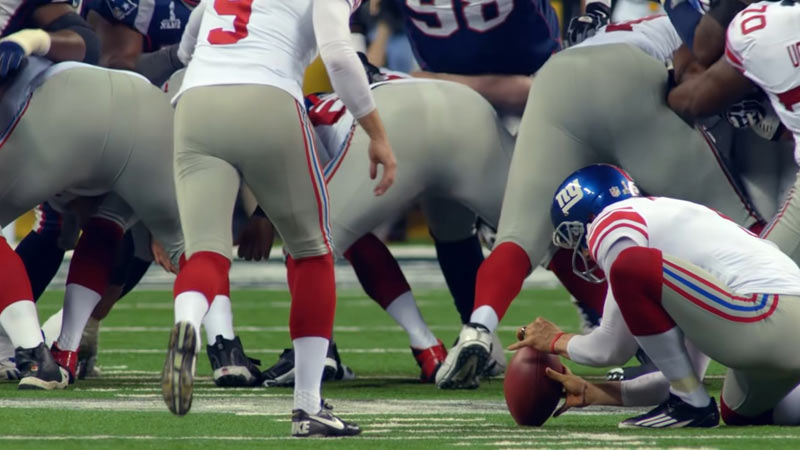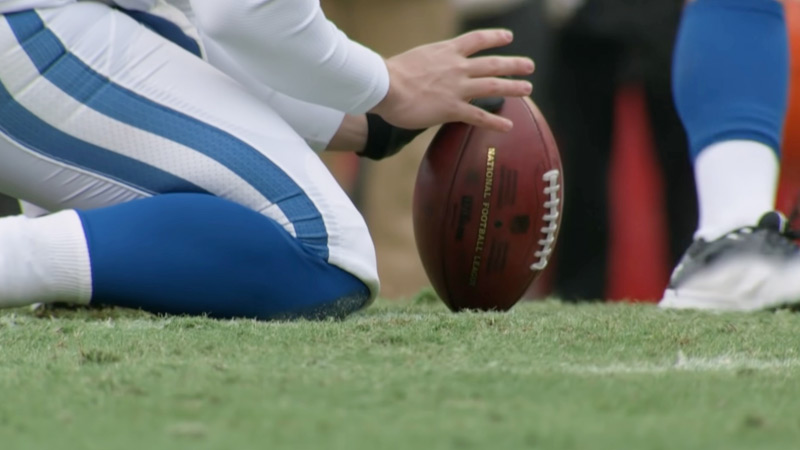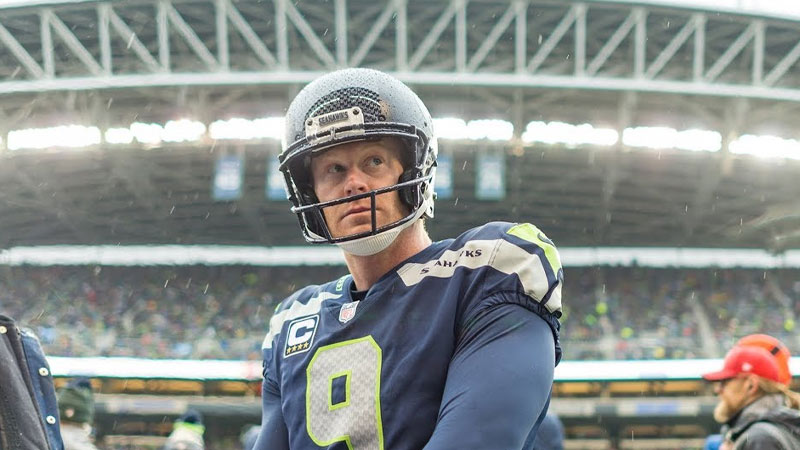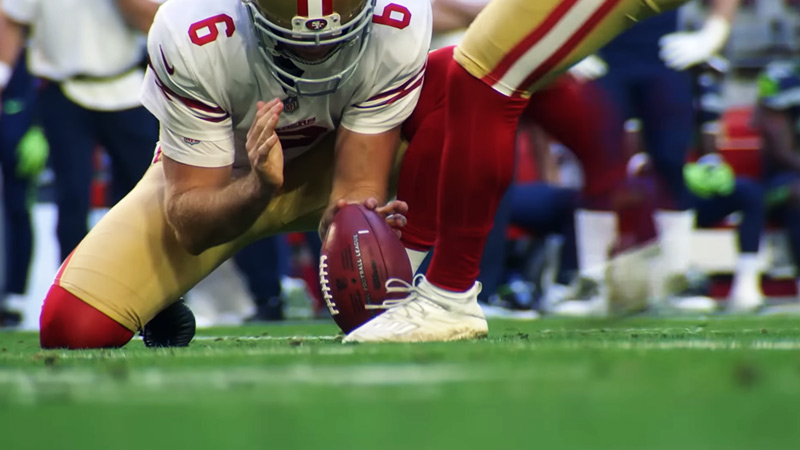In the intricate world of American football, the phrase “laces out” carries a unique significance. While it may seem like a simple expression, it plays a critical role in the success or failure of one of the game’s most crucial plays: the field goal or extra point attempt.
“Laces out” refers to the precise positioning of the laces on the football when it is being held for a kicker. This seemingly minor detail is anything but trivial, as it can significantly impact the trajectory and accuracy of the kick.
In this introduction, we will delve into the intricacies of What Does Laces Out Mean, and its importance in the sport.
What Does Laces Out Mean?
In football, the term “laces out” is a phrase often used in the context of field goal and extra point attempts, particularly when a player is responsible for holding the football for the kicker.
When the holder positions the ball with the laces of the football facing away from the kicker and toward the goalposts, it is said to be “laces out.”
This is considered the ideal way to hold the ball because it provides the smoothest and most consistent surface for the kicker to make clean contact with their foot.
Properly positioning the laces out reduces the chances of the kicker’s foot hitting the laces, which can cause the ball to wobble or go off course.
Ensuring that the laces are facing away from the kicker is a fundamental aspect of the holder’s job to optimize the chances of a successful field goal or extra point attempt in American football.
Laces Out Strategies

Here are some strategies related to “laces out” in football:
Holding Technique
One fundamental strategy for “laces out” is the proper technique for the holder. The holder must ensure that the football’s laces are facing away from the kicker, usually pointing directly toward the goalposts.
This requires skill and precision to position the ball correctly while maintaining a steady hold.
Practice and Repetition
Both kickers and holders must engage in extensive practice and repetition to ensure consistent “laces out” positioning.
This strategy involves countless repetitions in different weather conditions and game situations to develop muscle memory and maintain accuracy under pressure.
Timing and Coordination
The timing between the snap, the hold, and the kick is critical for successful field goals and extra points. Holders need to coordinate with snappers and kickers to ensure that the ball is placed “laces out” smoothly and without interruption to the kicker’s rhythm.
Mental Focus
Holding “laces out” requires mental focus and composure. Holders must remain calm under pressure, even in high-stakes situations, to ensure they execute the technique correctly and consistently.
Adjusting for Weather Conditions
Weather can be a significant factor in holding “laces out.” Wind and rain, in particular, can affect the flight of the ball. Strategies include adjusting the grip and placement of the ball to compensate for these conditions and maintain the laces’ orientation.
Backup Plans
In case of a bad snap or an unexpected problem with the hold, it’s essential for the holder to have a backup plan. This may involve quickly repositioning the ball so the laces are in a more favorable position for the kicker or even improvising to salvage the play.
Communication
Effective communication between the kicker and the holder is crucial. Kickers often have preferences for the angle and orientation of the ball, and holders need to understand and accommodate those preferences.
Clear, concise communication can lead to successful “laces out” holds and accurate kicks.
Holding “laces out” is a specialized skill in football that requires constant refinement and attention to detail. Successful execution of these strategies ensures that the kicker has the best possible chance to make successful field goals and extra points, contributing significantly to a team’s success.
Why Are There Laces On A Football?

The laces on a football serve several important purposes, each contributing to the functionality and characteristics of the ball. Here are some reasons why there are laces on a football:
Grip Enhancement
The laces provide additional grip for players when throwing, catching, and carrying the ball. This is particularly important in wet or slippery conditions, allowing quarterbacks to maintain control and receivers to secure catches.
Aerodynamic Stability
The laces help stabilize the flight of the football by creating turbulence around the ball, which reduces erratic movements in the air. This stability allows for more accurate passes and kicks.
Ball Control
For quarterbacks and kickers, the laces provide a tactile reference point for finger placement on the ball. This control is crucial for delivering accurate passes and making precise kicks.
Spin Control
The laces allow players to put a spin on the ball, affecting its trajectory and movement. Quarterbacks use the laces to control the spin rate, which can create a more predictable and catchable ball for receivers.
Grip for Kickers
In kicking situations, the laces provide a surface for the kicker’s foot to make contact. While field goals and extra points aim to have the laces facing away from the kicker (laces out), kickoffs often use the laces to add spin and control the flight of the ball.
Tradition and Aesthetics
The laces are an iconic part of the football’s design and have become a symbol of the sport. They contribute to the recognizable appearance of the ball, making it instantly identifiable as a football.
Heritage and Tradition
The presence of laces on the football is a nod to the sport’s historical roots. Early footballs were made from pig bladders or other materials and featured laces for closure.
While modern footballs no longer require laces for closure, they continue to be an integral part of the ball’s design, connecting the sport’s present to its past.
The laces on a football are not merely decorative but serve crucial functional purposes.
They enhance grip, provide control, and contribute to the stability and aerodynamics of the ball, ensuring that it performs optimally for passing, catching, and kicking in the game of football.
Which Players Did Laces Out In Football?

The term “laces out” in football primarily pertains to the holder during field goal and extra point attempts, as it’s their responsibility to ensure that the laces on the football are properly positioned for the kicker.
Here are some notable NFL holders who have played crucial roles in executing “laces out” holds:
Jon Ryan
Jon Ryan, a skilled punter and holder, spent most of his career with the Seattle Seahawks. His reliability as a holder played a significant role in the success of Seahawks’ kickers during his tenure with the team, including their Super Bowl victory in 2014.
Matt Turk
Matt Turk, a veteran punter and holder, was known for his precise holds during his NFL career. He played for several teams, including the Washington Redskins and Houston Texans, and was trusted by kickers for his consistency in setting the ball “laces out.”
T.J. Conley
T.J. Conley, a punter who held for the New York Jets, displayed exceptional consistency in his holding technique. His ability to consistently present the football “laces out” contributed to the Jets’ special teams’ effectiveness.
Bryan Anger
Bryan Anger, a punter who held for the Tampa Bay Buccaneers, gained recognition for his steady and precise holds. His reliability as a holder helped the Buccaneers’ kickers, including during their Super Bowl win in 2021.
Pat McAfee
Although primarily known for his punting abilities, Pat McAfee, during his time with the Indianapolis Colts, demonstrated versatility as a holder. His consistency in presenting the football “laces out” aided the Colts’ kicking game.
Bradley Pinion
Bradley Pinion, a punter who held for the San Francisco 49ers and later the Tampa Bay Buccaneers, showcased his skill as a holder. His dependable holds were crucial in supporting his team’s kicking units.
Jake Bailey
Jake Bailey, the punter and holder for the New England Patriots, has earned recognition for his accuracy in holding “laces out.” His proficiency as a holder has contributed to the Patriots’ special teams success.
These holders play a critical, albeit often overlooked, role in ensuring the success of field goals and extra-point attempts.
Their ability to consistently position the laces correctly for the kicker can be the difference between a successful kick and a miss, making them invaluable contributors to their respective teams.
FAQs
What does “Laces Out” mean in football?
“Laces out” is a phrase used in football, specifically during field goal and extra point attempts. It refers to the proper positioning of the laces on the football when it’s held for a kicker.
The goal is to have the laces facing away from the kicker and toward the goalposts. This positioning is crucial for a clean kick and accurate trajectory.
Why is “Laces Out” important in football?
“Laces out” is vital because it can significantly affect the flight of the ball during a kick. If the laces are facing the kicker, it can cause instability and affect accuracy, potentially leading to a missed field goal or extra point.
Who is responsible for ensuring “Laces Out” in football?
The holder, typically a backup quarterback or a specialized player, is responsible for positioning the laces correctly for the kicker. Their precise execution is essential for a successful kick.
What happens if the laces are not “Out” during a kick?
If the laces are not properly facing away from the kicker (i.e., “laces in”), it can lead to an unpredictable and potentially inaccurate kick. This can result in the ball veering off target, often causing a missed field goal or extra point.
Are there exceptions to the “Laces Out” rule in football?
While “laces out” is the ideal scenario, in situations where the snap is less than perfect, the holder may need to make quick adjustments to ensure a clean hold, even if it means the laces aren’t perfectly “out.”
However, the goal is always to have the laces facing away from the kicker for a more accurate and consistent kick.
Conclusion
“Laces out” in football transcends its simple, three-word phrase. It symbolizes the quest for perfection in a game known for its complexity and precision.
From the holder’s meticulous placement of the laces to the kicker’s follow-through, every element of this process must align for a successful kick.
As we conclude our exploration of what “laces out” means, it’s evident that this seemingly minor detail encapsulates the essence of the sport—a relentless pursuit of excellence in even the smallest of details.
It serves as a reminder that success on the gridiron often hinges on the careful execution of fundamental principles, and “laces out” remains a testament to the dedication and craftsmanship that define American football at its highest level.







